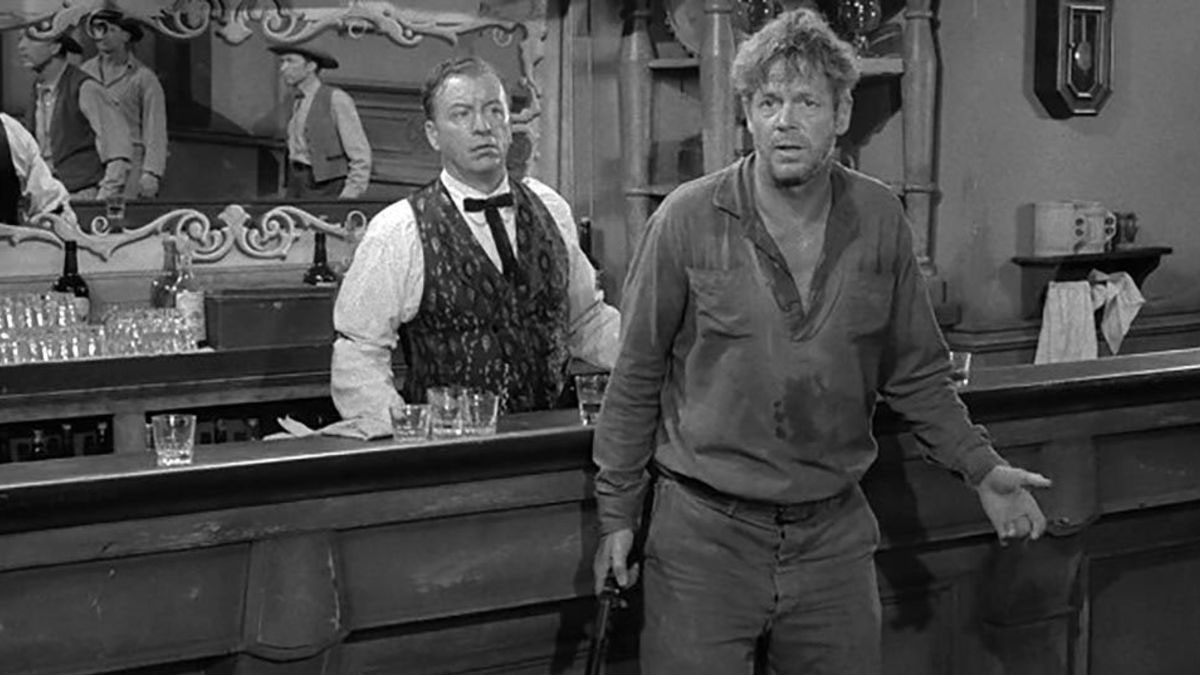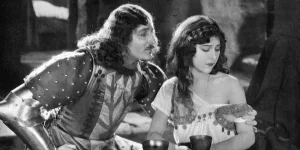
Social criticism is the foundation of The Twilight Zone. If there has ever been any confusion about the show’s true purpose, it’s probably because the original Twilight Zone episodes often had to disguise their messages. Inspired by his battles with network censors who were quick to cut anything that may upset even the worst kinds of people, Twilight Zone creator Rod Serling decided that his show would address the human core of social issues rather than exactly what was happening at the time. The sci-fi genre offered the perfect camouflage for Sterling’s ambitions. As Serling once said, “You can put these words in the mouth of a Martian and get away with it.”
Fascists could look like aliens, bigots could be literal monsters, and censorship could occur on some other planet. Those who knew the horror of such real-life atrocities could watch The Twilight Zone and understand what was being said. Those who didn’t…well, the show never seemed to be too concerned about them. Either they’d learn something new while watching early must-see TV, or they’d continue to live with the ignorance that The Twilight Zone often criticized.
Yet, there was one woe of society that The Twilight Zone often commented on with surprising directness: the power of nostalgia. It wasn’t necessarily seen as a taboo topic at the time, and it didn’t feel as pressing as some of the other issues the show regularly tackled. Decades later, though, it’s difficult to look back at the show and not see those comparatively quaint episodes about nostalgia as a vital early warning delivered during a time many are now dangerously nostalgic for.
Walking Distance
While The Twilight Zone’s fourth episode (“The Sixteen-Millimeter Shrine”) dealt with the dangers of living in the past, it was the show’s fifth episode (“Walking Distance”) that delivered its first masterpiece meditation on nostalgia.
“Walking Distance” follows an ad executive named Martin Sloan who goes on a drive to escape the the pressures of modern life. He soon finds himself near Homewood: the town where he grew up. As he enters Homewood, Sloan realizes that he has been taken back in time to when he was a kid. After a nearly disastrous encounter with his younger self, Sloan confronts a hard truth. The past is no longer his world. He may say he only desires to remind his younger self to appreciate those days, but that seemingly simple request only solidifies the dangerous idea that the best years of one’s life are finite and often occur early.
The Twilight Zone eventually grew to include numerous episodes that addressed similar themes. “A Stop at Willoughby” sees a man kill himself in pursuit of simpler times. “The Incredible World of Horace Ford” forces us to watch a man relive the parts of his youth he’d conveniently forgotten about. “The Trouble with Templeton” involves the ghosts of the past making a sacrifice to show a lost man the value of simply living.
Yet, “Walking Distance” is often considered the show’s definitive statement on nostalgia. It’s an incredible piece of television storytelling that eloquently addresses that eternally powerful message “You can’t go home again.”
“Walking Distance” is also Serling’s most personal look at nostalgia. It was largely based on trips he would take back home following the death of his father. According to Serling’s daughter Anne, those trips were Serling’s way of “going back in time.” Serling once described nostalgia as his “major hang-up.” He too often desired to go back to how it was “as we remember it.” Anne says that the biographical nature of the episode makes it one of her favorites in the series. Serling has also cited it as one of his favorites, though the ever-critical writer wishes he could go back and tweak elements of the episode that bugged him in retrospect. The irony of wanting to go back and change that episode was likely not lost.
Serling’s battles with nostalgia may be the key to what makes many of The Twilight Zone‘s nostalgia episodes so effective. They often present the hopelessly nostalgic as tragic figures but not necessarily victims. In those protagonists (especially Martin Sloan), we see the pain of being able to recognize your faults yet still struggle to overcome them. They need to be taught a lesson, and some lose everything learning it.
Unlike the bigots, tyrants, and weak-hearted who often learn their lessons in The Twilight Zone, we are often asked to view the plight of the nostalgic through a tear in our eyes. “Sorrow” is at the root of the word nostalgia, and sorrow is at the heart of those episodes. It’s just that the sympathy for the universal allure of nostalgia makes it that much more important to resist succumbing to it.
There is another quality that separates those nostalgia episodes from the pack. In a show that so often had to disguise its social commentary to make it to the air, The Twilight Zone often addressed nostalgia in a shockingly blunt way. It’s an approach that was both enabled by the times the show was made in and made all the more horrifying because of them.
The Myth of America’s Golden Age
The Twilight Zone premiered on October 2, 1959, during what is often referred to as a “Golden Age” for America.
Broadly speaking, that period earned that nickname because of the widespread sense of optimism many Americans had following the end of World War II. A truly dark time was behind them, the economy was recovering, and a world of infinite promise lay ahead. Many modern cultural concepts involving the idea of “Americana” and the imagery of the American Dream can be traced back to this time.
However, there are a few specific things that were broadly considered “Golden” during that era. For instance, that period marked a golden age of capitalism fuelled by a growing jobs market, new tax laws, emerging social programs, higher wages, and widespread economic expansion That also led to the golden age of suburban growth, which, in turn, eventually contributed to those family-driven images of Americana. It was also regularly referred to as a golden age for television, which The Twilight Zone was a small part of.
Of course, the Twilight Zone was the golden age show that often endeavored to show us the darker side of that era. The Red Scare-driven increased paranoia about our friends and neighbors is expertly exhibited in “The Monsters Are Due on Main Street.” The dangers of widespread unified standards of beauty are explored in “Eye of the Beholder.” Increased attempts at censorship at the highest levels of government and business formed the basis of “The Obsolete Man.” Racism, prejudice, and the ignorance often responsible for so many social issues were addressed directly and indirectly in countless episodes.
It’s strange, then, to consider how many episodes of The Twilight Zone directly deal with the dangers of nostalgia. Was the show saying to stop romanticizing the past because the present (the “Golden Age”) was so promising and simply better? Almost certainly not. Not only did so many other episodes of the show endeavor to expose the often unspoken horrors of that time, but those in the show’s nostalgia episodes rarely longed for a specific time and place. The message wasn’t as simple as “The 1920s were better” but rather a warning against the very idea of romanticizing the past.
At the time, the vague idea that people should stop living in the past and make the most of the now likely allowed those episodes to pass through without relying so heavily on sci-fi metaphors. Now, though, it’s hard not to watch those episodes and be frightened and fascinated by the fact they were made amid an era that we are constantly being told we need to go back to.
In the last 45 years or so, we’ve seen more and more politicians and social leaders romanticize the ‘50s and ‘60s era America The Twilight Zone was largely made during. They use phrases like “family values,” “men being men,” and “you didn’t have to lock your doors” as shorthand to invoke powerful memories of a time when things were supposedly better.
Some are simply forgetting about the often harsher truths of those times and the many people whose lives were not better during them. Others simply never lived through them and are conflating their memories of a carefree youth with this mythical age gone by. For others, though, the decision to invoke the idea of that era directly and indirectly is a dog whistle. Their desire to take us back isn’t invoked with the understanding we’ll endeavor to improve the economy or housing while keeping so much of the progress we’ve made elsewhere. Like many of the time-traveling protagonists of The Twilight Zone, they want to be rid of the modern world.
It’s jarring to watch The Twilight Zone warn us about the dangers of such a philosophy during the very period of supposed “greatness” that some are constantly trying to drag us back to. Of all the ways we rightfully speak of that series being ahead of its time, few of its specific warnings have proven to be as tragically on-point as those about nostalgia. Now, we have series like Mad Men that look back at those golden times and say “It wasn’t all roses” with the value of hindsight supporting their observations. In that time, though, The Twilight Zone took a hard look at not just the terrors of that age but the fallacy of the notion that you can go back to when things were somehow perfect.
Of course, The Twilight Zone was often more interested in exploring the deeper human truths that led to such diseases rather than the specific social symptoms that may have presented themselves at any given moment. It’s when you examine those nostalgia episodes through that light that you find the real warning at the heart of them.
You Can’t Go Back
Nostalgia is an almost unavoidable part of the human experience. It is a source of pain and joy that we all must live with. Even Rod Serling who wrote and approved many horror stories about succumbing to nostalgia was not immune to its appeal.
Yet, feeling nostalgic is not inherently a bad thing. I often write retro-focused articles and enjoy looking back at the past both wistfully and critically. Even right now, we’re discussing a 65-year-old show. There’s undoubtedly some part of your childhood that you cling on to past the point of reason. Enjoying old movies, old cars, or old fashion doesn’t have to be a problem, nor does drifting off to sleep and allowing you to dream of a time when life at least seemed simpler.
In nearly every episode of The Twilight Zone that deals with nostalgia, dwelling on the past leads to melancholy about the present. However, things only become disastrous in those episodes when their protagonists try to force their way back. Unable to cope, they try to drag themselves (and sometimes, those around them) back to that mythical palace and time where they think they’d rather be. It is in those attempts that everything goes horribly wrong. Even with the aid of time travel or some form of magic, what they want is simply impossible to have.
The Twilight Zone doesn’t warn us to not feel nostalgic. That would be impossible. It instead warns us about the dangers of trying to alter our reality to try to make things as we believe they once were. Perhaps more importantly, it warns us against trusting those who say they can offer such a thing. No matter how hard it is, it is always better to strive for a better future built upon our knowledge of the present and our desire to truly address the roots of its issues rather than wish we didn’t have to know about them.
At a time when frightening movements are built around the idea of going back to the way things were, it’s easy to wish that we could simply rip off someone’s human mask to expose them as a monster, pan out to reveal what we’re seeing is occurring on some distant planet, or take just a brief trip to such eras to remind ourselves of the way they really were. We sadly can not. Those are luxuries only found in The Twilight Zone.
The post The Twilight Zone Was a Warning About the Dangers of Nostalgia appeared first on Den of Geek.







